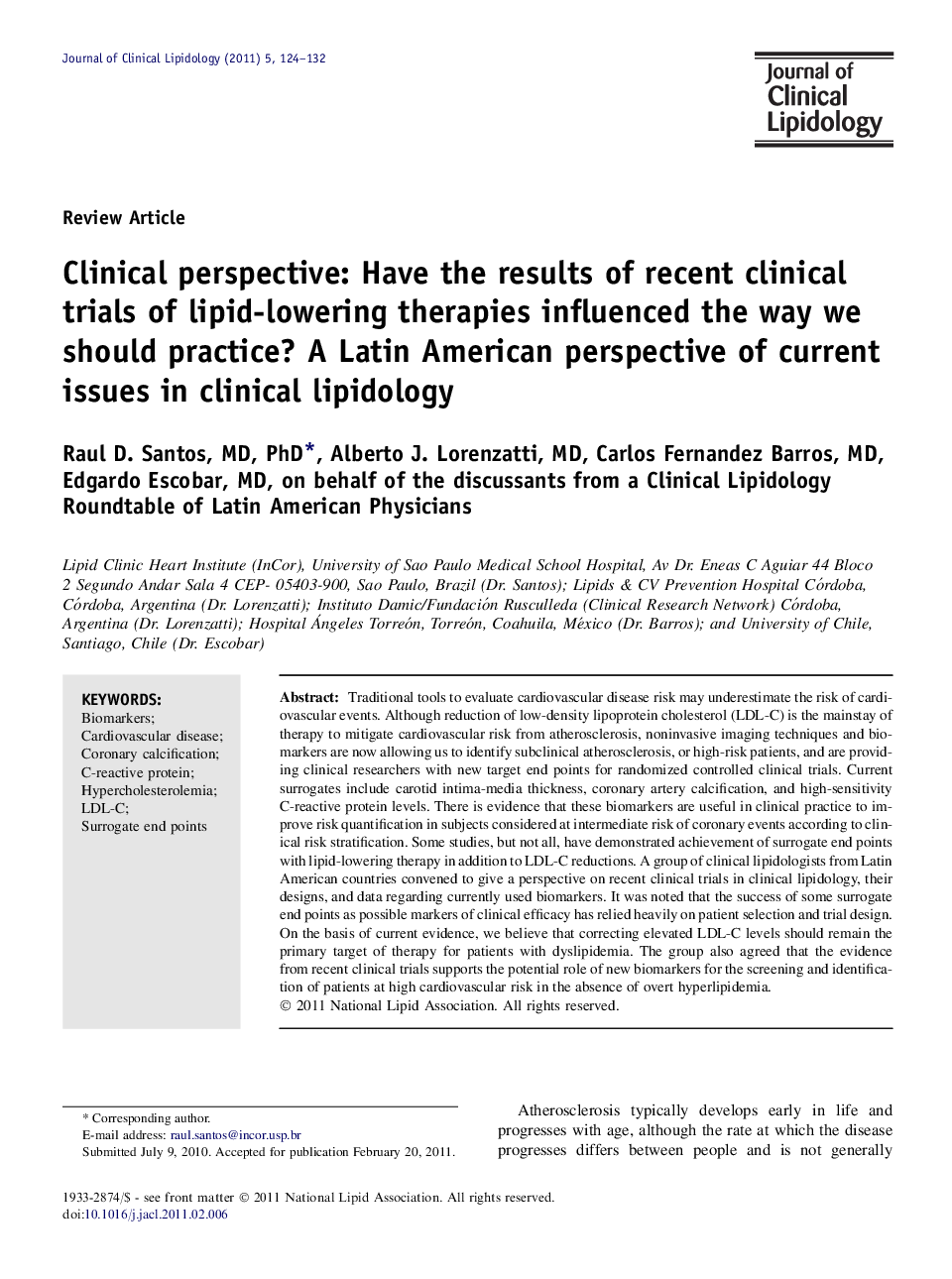| Article ID | Journal | Published Year | Pages | File Type |
|---|---|---|---|---|
| 2966479 | Journal of Clinical Lipidology | 2011 | 9 Pages |
Traditional tools to evaluate cardiovascular disease risk may underestimate the risk of cardiovascular events. Although reduction of low-density lipoprotein cholesterol (LDL-C) is the mainstay of therapy to mitigate cardiovascular risk from atherosclerosis, noninvasive imaging techniques and biomarkers are now allowing us to identify subclinical atherosclerosis, or high-risk patients, and are providing clinical researchers with new target end points for randomized controlled clinical trials. Current surrogates include carotid intima-media thickness, coronary artery calcification, and high-sensitivity C-reactive protein levels. There is evidence that these biomarkers are useful in clinical practice to improve risk quantification in subjects considered at intermediate risk of coronary events according to clinical risk stratification. Some studies, but not all, have demonstrated achievement of surrogate end points with lipid-lowering therapy in addition to LDL-C reductions. A group of clinical lipidologists from Latin American countries convened to give a perspective on recent clinical trials in clinical lipidology, their designs, and data regarding currently used biomarkers. It was noted that the success of some surrogate end points as possible markers of clinical efficacy has relied heavily on patient selection and trial design. On the basis of current evidence, we believe that correcting elevated LDL-C levels should remain the primary target of therapy for patients with dyslipidemia. The group also agreed that the evidence from recent clinical trials supports the potential role of new biomarkers for the screening and identification of patients at high cardiovascular risk in the absence of overt hyperlipidemia.
